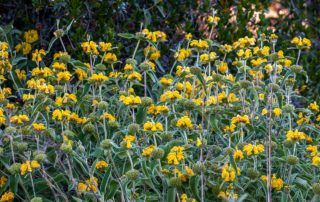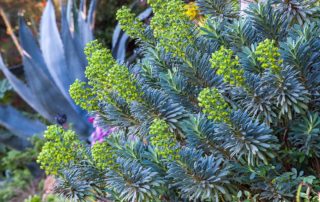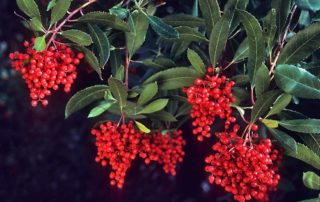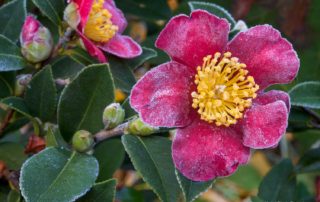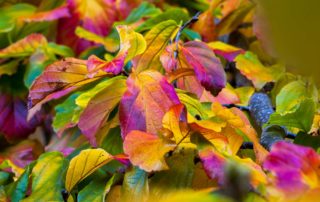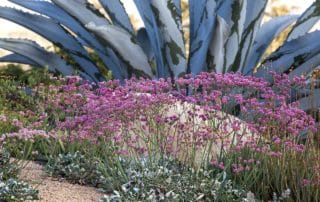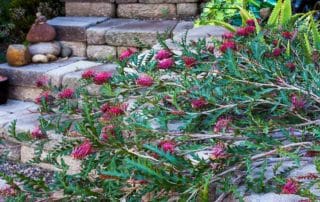Some of our favorite plants and gardens for summer-dry climates.
Jerusalem Sage
Although each species has a common name of its own, plants of the genus Phlomis are often called Jerusalem sage whether they hail from Portugal, Morocco, Turkey, or Israel. These are summer-flowering shrubs, subshrubs, or perennials with felted or woolly, sagelike leaves, many with serrated margins and silvery undersides. Whorled clusters of small, usually downward curving, two-lipped flowers are displayed at intervals along upright stems. Flowers are followed by ornamental seedheads that persist through the winter. Phlomis fruticosa (Jerusalem sage) In the garden Jerusalem sages blend well with many other low-water, sun-loving plants, especially the salvias and other


